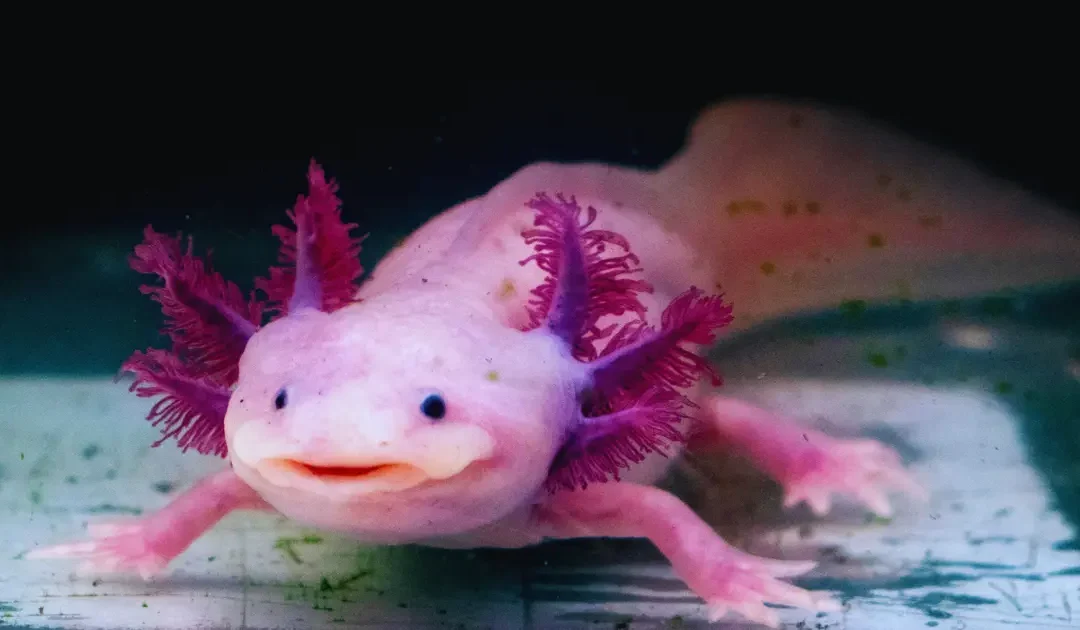The axolotl (Ambystoma mexicanum) is an extraordinary amphibian native to the lakes underlying Mexico City, particularly Lake Xochimilco. Unlike most amphibians that undergo metamorphosis from larva to adult, the axolotl remains in its larval form throughout its life, a phenomenon known as neoteny. This unique characteristic has made the axolotl a subject of scientific fascination and a symbol of Mexico’s rich biodiversity.
Appearance and Characteristics
Axolotls possess a distinctive, almost otherworldly appearance. They have wide heads with lidless eyes, feathery external gills that fan out from the sides of their heads, and a smiling mouth that gives them a perpetually friendly expression. Their bodies are elongated and aquatic, with limbs that end in delicate fingers. Their coloration varies from wild-type dark shades of brown and green to leucistic (pale pink with red gills) and albino varieties, often seen in captivity.
Regeneration Marvel
One of the most remarkable features of the axolotl is its extraordinary regenerative ability. It can regenerate not only limbs but also spinal cord segments, heart tissue, and even parts of its brain without scarring. This ability has attracted extensive research in regenerative medicine, as scientists hope to unlock clues that could help in human tissue regeneration and healing.
Habitat and Conservation
Originally thriving in the freshwater lakes of the Valley of Mexico, axolotls now face critical threats due to habitat loss, pollution, and invasive species like tilapia and perch. Their natural habitat has shrunk dramatically, making them critically endangered in the wild. Conservation efforts are underway, involving habitat restoration and breeding programs to save these remarkable creatures from extinction.
Cultural Significance
The axolotl holds an important place in Mexican culture. Its name derives from the Nahuatl language, meaning “water monster” or “water dog.” In Aztec mythology, the axolotl was associated with the god Xolotl, symbolizing transformation and regeneration. Today, it serves as a mascot for environmental awareness and is beloved by hobbyists worldwide as a unique and captivating pet.
In Conclusion
The axolotl is not just a biological curiosity but a living testament to nature’s wonder and resilience. Its ability to regenerate and its enchanting appearance make it an animal worth protecting and studying. As we deepen our understanding of this “walking fish,” we are reminded of the delicate balance of ecosystems and the importance of preserving our natural world.
Discover more from TheHubBuzz.com
Subscribe to get the latest posts sent to your email.

